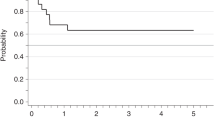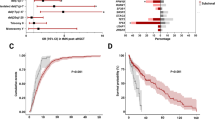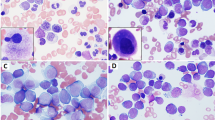Abstract
A 40-year-old male with Ph-positive CML underwent PBSC autografting after initial treatment with hydroxyurea and interferon. Following autograft he remained in chronic phase with cytogenetic or molecular evidence of low levels of residual Ph-positive cells. However, additional cytogenetic abnormalities, including t(3;21) typically seen in therapy-related myelodysplastic syndrome (MDS) and AML and blast crisis of CML, developed as an independent cell line following the autograft. More than 4 years after the autograft, the patient remains in chronic phase with no evidence of accelerated phase or blast crisis of CML, but with a concurrent MDS. We report a case of CML who developed therapy-related MDS following PBSC autograft while still remaining in chronic phase.
This is a preview of subscription content, access via your institution
Access options
Subscribe to this journal
Receive 12 print issues and online access
$259.00 per year
only $21.58 per issue
Buy this article
- Purchase on Springer Link
- Instant access to full article PDF
Prices may be subject to local taxes which are calculated during checkout
Similar content being viewed by others
Author information
Authors and Affiliations
Rights and permissions
About this article
Cite this article
Jacob, A., Griffiths, M., Larkins, S. et al. t(3;21) following peripheral blood stem cell transplantation in chronic phase chronic myeloid leukaemia. Bone Marrow Transplant 19, 1255–1258 (1997). https://doi.org/10.1038/sj.bmt.1700811
Received:
Accepted:
Issue Date:
DOI: https://doi.org/10.1038/sj.bmt.1700811
Keywords
This article is cited by
-
Cytogenetic evolution patterns in CML post-SCT
Bone Marrow Transplantation (2007)



